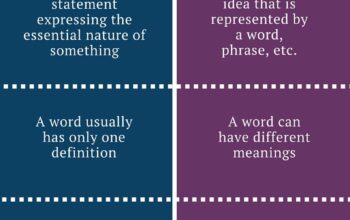Instrumentation engineering has long been the backbone of modern technological systems, akin to the unseen currents that power a vast electrical grid. Within this intricate tapestry of science and engineering, “packages” play a pivotal role. These packages encapsulate a myriad of components, frameworks, and methodologies essential for the effective design, deployment, and maintenance of instrumentation systems.
To embark on an exploration of packages in instrumentation engineering, one must first understand the multifaceted nature of instrumentation. This field involves the measurement and control of physical quantities such as pressure, temperature, flow, and level. Just as a symphony requires each musician to be attuned to a common key, effective instrumentation necessitates that various components harmonize seamlessly from conception to execution. Herein lies the allure of packages: they are the orchestrated arrangements that facilitate coherence among disparate elements.
At the core, packages often refer to software or hardware collections that include necessary tools, libraries, and frameworks designed to streamline the engineering process. These curated assortments not only enhance productivity but also ensure that engineers can conjure complex systems without reinventing the wheel. Think of packages as a well-stocked toolbox that a craftsman relies on — each tool designed with an exquisite purpose, yet equally capable of complementing a myriad of tasks.
The architectural framework of a package typically encompasses various components, including sensors, actuators, control algorithms, and data acquisition systems. Each component represents a fundamental element within the broader context of instrumentation, yet together they form a cohesive unit — much like the individual colors in an artist’s palette unite to create a masterpiece. The meticulous selection of components is paramount; an improperly chosen element can lead to dissonance within the system, reminiscent of a piano player striking a discordant key amidst a melody.
One of the hallmark features of packages in instrumentation engineering is their abstraction capability. Abstraction allows engineers to focus on higher-level design considerations without delving into the minutiae of each component’s function. This is akin to a master chef discerning the flavor profiles of a dish while relying on sous-chefs to execute the preparation. The engineer benefits from this abstraction by reducing cognitive load, enabling creativity, and fostering innovation.
In contemporary instrumentation engineering, programming languages and environments such as MATLAB, LabVIEW, and Python have birthed a myriad of packages that facilitate data analysis, system modeling, and simulation. These programming packages allow engineers to manipulate complex algorithms and visualize data, akin to sculptors refining their vision as they chip away at a block of marble. Each line of code, each algorithm, serves a specific function that enhances the overall robustness of the system.
Moreover, with the rise of the Internet of Things (IoT) and Industry 4.0, packages have evolved to incorporate connectivity and real-time data processing. This capacity mirrors a conductor coordinating a live orchestra, where each instrument must respond and adapt to the dynamic composition in real-time. The responsiveness of instrumentation systems enhances operational efficiency and fosters predictive maintenance, ensuring that systems not only perform optimally but also anticipate potential failures before they manifest.
Another fascinating aspect of packages is their inherent ability to encapsulate standards and protocols that govern communication between devices. In the world of instrumentation, adherence to standards such as HART, Modbus, and Profibus is crucial. These protocols serve as lingua franca, allowing disparate systems to “speak” the same language, akin to diplomats negotiating peace treaties. By employing these standard packages, engineers can ensure interoperability and integration, thus nurturing collaboration across various sectors.
Furthermore, the implementation of packages extends into the realm of design and simulation software, where virtual environments allow for the exploration and validation of instrumentation systems before physical deployment. This feature is similar to an architect creating intricate 3D models of edifices, where structural integrity is analyzed long before the first brick is laid. Through simulation packages, engineers can identify potential design flaws and rectify them preemptively, thus conserving resources and mitigating risk.
Despite the myriad advantages offered by packages in instrumentation engineering, it remains imperative to address challenges such as version control, dependency management, and the subtleties of customization. Just as a garden requires diligent tending to flourish, so too must engineers nurture their packages, keeping them updated and aligned with evolving technologies and standards. The delicate balance between standardization and customization formulates an ongoing dialogue that shapes the future trajectory of instrumentation engineering.
In conclusion, packages in instrumentation engineering present an intricate dance of components working in concert to create functional and efficient systems. They encapsulate a wealth of tools, standardizations, and methodologies that not only streamline the engineering process but also innovate how we interact with and manipulate the physical world. As the field continues to advance, the evolution of packages will undoubtedly retain a central role, serving as the conduits through which ingenuity flows, much like currents powering the symphonic energies of modern life.










